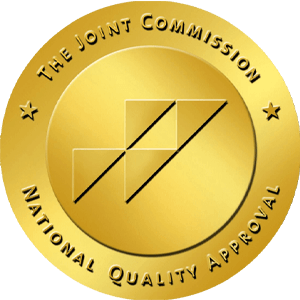Amazingly enough, 8000 year-old hardened Sumerian clay-tablets are the earliest prescriptions of opium. Ancient Greeks, Indians, Chinese, Egyptians, Romans, Arabs, to people in middle ages and Europeans from renaissance to now- all used opioids. And it is because they knew opium as an ever-approved next-door medicine-a panacea for all maladies. Today, for anyone just coming out of intense surgery for example, opioids can be a savior for when pain is at its peak and prescribed accordingly. But, for others opioid use can be a slippery slope down the addiction path with issues to follow.
Even when prescribed appropriately and taken as directed, opioid use still has a high potential for causing opioid addiction. Unfortunately in fact, nearly three out of four prescription drug overdoses are caused by painkillers or opioid addiction. In light of this worsening problem, there is at least hope in finding treatment centers aimed at solving how opioid use turns into an addiction.
Omega Recovery was created in the beautiful city of Austin in 2018, with an aim to address the explosive epidemic of opioid addiction and mental health disorders. Concerning disorders that are occurring in record numbers among young people in America today. Building on the pioneering work of Dr. Nicholas Kardaras, Omega created cutting edge protocols combined with the best evidence-based modalities known today. All to meaningfully and effectively treat people struggling with substance addiction such as opioid use and/or mental health disorders. Omega clients engage in trauma-informed therapies, including CBT, DBT, Motivational Interviewing, Nature Immersion, and Outdoor Behavioral Health Therapies. All of which aim to help shift clients into healthier habits as they also address the underlying issues that are contributing to t
heir opioid use. Help is just a phone call away, and with opioid use there is no time to lose.
What Are Opioids And Why Are They Prescribed?
It is easier to understand how opioid use turns into an addiction when you really get an idea of what opioids are and why they are used. Opioids are natural, semi-synthetic, or synthetic chemicals that reduce perception of pain by interacting with opioid receptors in the body and brain. The terms opioids and opiates are sometimes used interchangeably. Some of the prescription pain relievers include oxycodone (OxyContin®) hydrocodone (Vicodin®), codeine, and morphine for example. Synthetic opioids include fentanyl, methadone, pethidine, tramadol and carfentanil.
Opiate refers specifically to natural compounds derived from the poppy plant, such as heroin or morphine. And opioids may be natural or derived in a lab, such as fentanyl and heroin respectively. Synthetic and semi-synthetic opioids are synthesized in a lab to mimic the effects of natural opiates. However, they are developed to be stronger and more potent than natural opiates which can somewhat explain how opioid use turns into an addiction.
Staggering Statistics To Notice
According to the American Medical Association (AMA), an estimated 3% to 19% of people who take prescription pain medications develop an addiction to them. And about 45% of people who use heroin started with an addiction to prescription opioids, according to the AMA. Prescription opioids can be a life saver for anyone in extreme pain and when prescribed appropriately by a professional. And opioid use is in fact meant to help manage acute pain from an injury, surgery, cancer treatment, palliative care, or hospice care.
There is no denying that many people rely on prescription opioids to help manage their conditions under the care of a physician. While opioid use is prescribed to reduce the perception of pain, it can also cause drowsiness, constipation, confusion, nausea, and euphoria. Opioid use in high doses can slow breathing which can lead to death. However, easier access to prescription opioids and to heroin have contributed to the current opioid epidemic.
Treatment Options That Are Used For Opioid Use And Addiction
Not all opioid addiction issues are the same, and neither are the treatment options found at recovery facilities across the globe. While most, if not all, opioid addiction treatment facilities will offer the same most common forms of treatment ( DBT, CBT, EMDR, and Motivational Interviewing for example), a select few can also provide more unique options. At Omega Recovery for example, we offer both evidence based and experimental treatment options for opioid addiction issues and recovery. Having a unique and/or exotic location can allow an opioid addiction treatment center the space to provide nature infused treatments unlike any other. Surf Therapy, for example, can be utilized for treatment centers in proximity to the ocean. Equine Therapy can be found at centers located away from a bustling city. Location can play a huge role in the availability of treatment options for seeking recovery from opioid addiction. Professionals at qualified rehab centers understand how opioid use turns into an addiction, and they use their experience to support clients each step of the way.
How Opioid Use Turns Into An Addiction
Opioids are prescribed every day for millions of people, and their use is not going away. However, an awareness and sharing of potential dangers with opioid use should be more transparent if we want to lower addiction statistics. How opioid use turns into an addiction can depend on the struggling individual. Including what factors were at play, what conditions occurred before and after the opioid use, and what is the user’s environment.
It is proven how opioids are highly addictive, with court cases against opioid prescription drugs on the rise and being won. How opioid use turns into an addiction is largely in part because opioids activate powerful reward centers in your brain. Opioids trigger the release of endorphins, which are the brain’s feel-good neurotransmitters. Endorphins create a temporary but powerful sense of well-being, muffling the brain’s perception of pain and boosting feelings of pleasure. This can be a wonderful thing for anyone suffering from extreme pain such as cancer, but addictive for anyone in recovery.
Timeline Waves Showing How Opioid Use Turned Deadly
- Wave 1 – The first wave of opioid addiction started in the 1990s with an increase of opioid prescriptions and subsequently overdose deaths from these pills.
- Wave 2 – In 2010 wave 2 began with overdose deaths due to heroin.
- Wave 3– came in 2013 with overdose deaths involving illicitly manufactured fentanyl and synthetic opioids.
Full transparency about opioid use and addiction, as well as more research into how prescribed opioid use can be used and tapered off without instigating addiction can help this growing epidemic. How opioid use turns into an addiction can vary for each individual just as the severity of addiction. If you or a loved one are concerned about a possible addiction to opioids, reaching out to a recovery center will be the best decision you’ve ever made. Omega Recovery for example, understands the severity of opioid addiction and is here for clients each step of the way.
Common Evidence Based Treatments Used For Opioid Addiction
Cognitive Behavioral Therapy – Also known as CBT, this active therapeutic modality is present-oriented, problem-focused, and goal-directed. As an evidence-based treatment modality, CBT is a proven effective treatment for opioid addiction and other substance abuse disorders, behavioral addictions (gambling, food, internet, sex), eating disorders, and specific mental health diagnoses. Finding the right treatment for opioid addiction should include researching success rates of different therapies available at a potential center.
Dialectical Behavioral Therapy – Also known as DBT, this evidence based form of treatment teaches clients how to regulate their emotions to reduce self-destructive behaviors. Dialectical behavioral therapy is primarily a skill-building approach that focuses on the development of four key skill sets:
- Distress Tolerance – being able to successfully and effectively work with short term or long term pain.
- Emotion Regulation – aims to identify behaviors and implement coping mechanisms to help modify them.
- Mindfulness – putting aside judgment and attention to understand how others may feel during a situation.
- Interpersonal Effectiveness – ability to balance the wants and needs of a relationship while respecting boundaries and priorities.
Eye Movement Desensitization and Reprocessing – Also known as EMDR, this form of treatment uses a patient’s own rapid and rhythmic eye movements as a tool for insight and recovery. These eye movements dampen the power of emotionally charged memories of past traumatic events. In other words, EMDR is a structured therapy that encourages the patient to briefly focus on the trauma memory while simultaneously experiencing bilateral stimulation. These experienced eye movements are then associated with a reduction in the vividness and emotion associated with the traumatic memories.
Both Evidence-Based And Holistic Forms Of Treatment
Motivational Interviewing – This form of therapy is a collaborative, therapeutic conversation between licensed clinicians and clients that addresses the common problem of conflict for change with opioid addiction. As defined by William Miller, the creator of motivational interviewing, its purpose is to strengthen the client’s own motivation for and commitment to change in a manner that is consistent with said client’s values. Therefore, rather than imposing or forcing changes, the practitioner will “meet the client where the client is” and help him/her move toward his/her goals by drawing out and building his/her readiness to change. Motivational Interviewing is a wonderful form of therapy that can help one understand how opioid use turns into an addiction.
Mindfulness-Based Stress Reduction – Also known as MBSR and developed by Dr. Jon Cabot-Zinn, this kind of treatment can be utilized in how opioid use turns into addiction. This form of substance abuse treatment is a sequential method that teaches the individual who is struggling with racing and impulsive thoughts how to be in the “here and now”. By focusing on the breath or on an object in the room, the client slowly becomes able to collapse their awareness into the present moment.
Holistic Or Experimental Forms Of Treatment For Opioid Use
Nature Immersion – Immersion innNature uses a different approach to therapy by removing the clinical setting and focusing on experiencing change in a more natural setting. Nature Immersion Therapy can be even more powerful and transformative when the individual struggling with opioid use begins to understand the deeper significance of certain experiences. Sometimes how opioid use turns into an addiction stems from a lack of inner and genuine connection. Nature has proven to be the ultimate connector, whether it be by a walk in the woods or reading a book in the warming sun.
Outdoor Behavioral Health Therapy – From a therapeutic standpoint, outdoor and Adventure Therapy offers increased efficacy in different key areas. Which include; self-confidence, emotional resilience, trust-building, social skills, interpersonal communication, life skills, stress reduction to start. Outdoor Behavioral Health Therapy is designed to address problem behaviors by fostering personal and social responsibility and the emotional growth of clients. Activities such as hiking, camping, rock climbing, and canoeing are often included and helpful for understanding how opioid use turns into addiction. These activities provide opportunities for individuals to challenge themselves, build resilience, and develop genuine confidence.
Find The Right Treatment For You Or A Loved One
Finding the right treatment options for opioid addiction relies on the research and understanding of the options available to you at a facility. No matter for yourself or someone you care about, finding the right fit is key. One treatment may be great for one individual but not so much for another. How opioid use turns into an addiction is unique to the struggling individual’s needs and experiences. Which is the same for treatment, each option should be explored to find the right path to walk for recovery from opioid use. Really exploring each option is essential- such as what each outlines, the cost and time needed, as well as their individual success rates. Opioid addiction does not have to rule a person’s life, healing and sobriety can find a way and stay.




